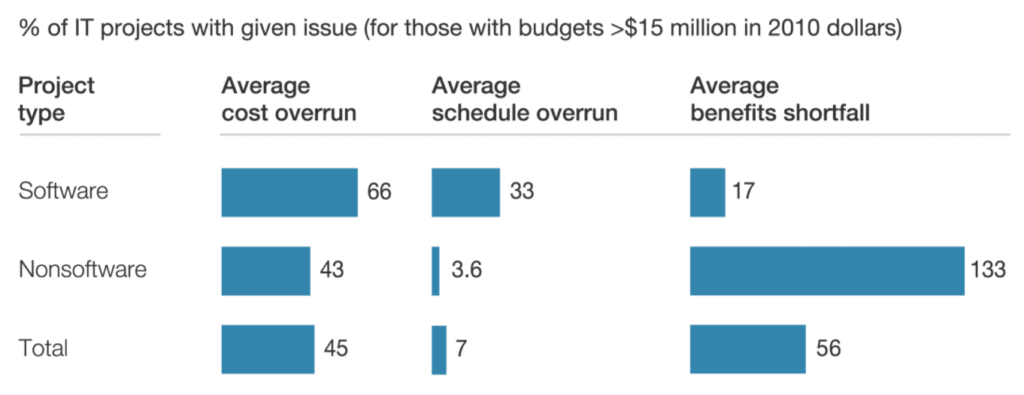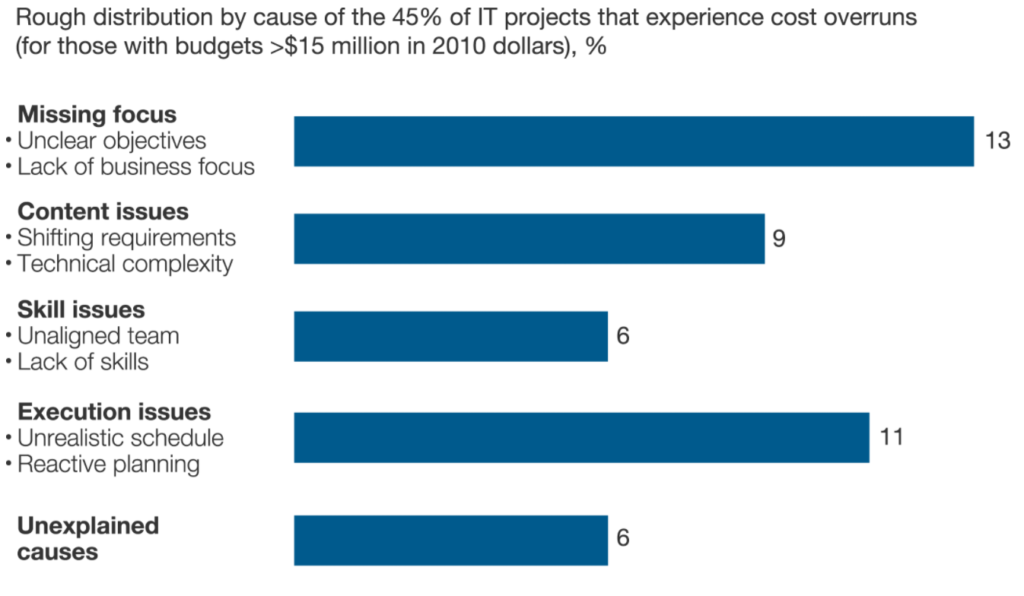Delivering Migration Projects on Time
I did a couple great sessions yesterday for the awesome Dallas Oracle User Group, (DOUG.) It was the first time I did my thought leadership piece on Making Sense of the Cloud and it was a great talk, with some incredible questions from the DOUG attendees!
This points me to a great [older] post on things IT can do to help guarantee tech projects are more successful. DevOps is a standard in most modern IT shops and DBAs are expected to find ways to be part of this valuable solution. If you inspect the graph, displaying the value of different projects in ROI, vs. how often these different types of projects run over budget and time, it may be surprising.
Where non-software projects are concerned, the project rarely runs over the schedule, but in the way of benefits, often comes up short. When we’re dealing with software, 33% of project run over time, but the ROI is excruciatingly high and worthy of the investment. You have to wonder how much of that over-allocation in time feeds into the percentage increase in cost? If this could be deterred, think about how more valuable these projects would become?
The natural life of a database is growth. Very few databases stay a consistent size, as companies prosper, critical data valuable to the company requires a secure storage location and a logical structure to report on that data is necessary for the company’s future. This is where relational databases come in and they can become the blessing and the burden of any venture. Database administrators are both respected and despised for their necessity to manage the database environment as the health of the database is an important part of the IT infrastructure and with the move to the cloud, a crucial part of any viable cloud migration project.
How much of that time, money and delay shown in those projects are due to the sheer size and complexity of the database tier? Our source data shows how often companies just aren’t able to hold it together due to lacking skills, lacking estimates in time estimates and other unknowns that come back to bit us.
I can’t stress enough why virtualization is key to removing a ton of the overhead, time and money that ends up going into software projects that include a database.
Virtualizing non-production databases results in:
- Ability to deliver full copies of production for developers without extensive demands on storage.
- Ability to deliver those databases in a matter of minutes vs. days or weeks.
- Ability to refresh databases as needed for any project.
- Self-service user-interface so developers and testers can recover from a catastrophic issue in a database without having to grovel to a DBA to restore a virtual database.
- Ability to branch the VDB and do versioning, which is awesome for both developers and testers, (I know, we DBAs care very little about this feature… :))
- In migrations/cloud migrations, the ability to migrate databases in short periods of time and to limit the storage footprint to save company the money they were promised the cloud would deliver that most are finding out in the long run, is not occurring with traditional database scenarios.
It’s definitely something to think about and if you don’t believe me, test it yourself with a free trial! Not enough people are embracing virtualization and it takes so much of the headache out of RDBMS management.



